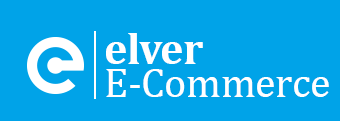Introduction
For any entrepreneur venturing into the realm of e-commerce, comprehending the nuances of Amazon’s commission structure is vital to unlocking the gateway to profitability. Amazon offers an immense marketplace for sellers to showcase their products to millions of potential customers. However, behind this vast platform lies a meticulously structured fee system that encompasses various charges, commonly known as commissions. These fees, including referral fees, fulfilment costs, and additional charges, significantly impact a seller’s bottom line. Understanding and navigating through these commissions is pivotal to success. It shapes pricing strategies, influences product selection, and ultimately defines the profitability of a seller’s enterprise within the highly competitive landscape of Amazon’s marketplace.
Understanding Amazon’s Fee Structure
Types of Fees
Amazon sellers encounter several types of fees that contribute to the overall cost structure of selling on the platform. The primary fees include referral fees, which are a percentage of the product’s sale price and vary based on product categories. Fulfilment fees encompass charges for storing, picking, packing, and delivering items to customers, with distinctions between Fulfilment by Amazon (FBA) and Fulfilment by Merchant (FBM) methods. Subscription fees, applicable to Professional selling plans, offer additional benefits but come with a monthly cost. Furthermore, sellers might encounter additional charges such as storage fees for inventory held in Amazon’s warehouses, high-volume listing fees for exceeding set limits, and other incidental expenses that can impact a seller’s overall profitability.
Amazon referral fees are charges that sellers pay for the privilege of selling their products on the Amazon platform. These fees are based on a percentage of the item’s sale price, excluding any taxes collected through Amazon.
Each product category has a predefined referral fee percentage. For instance, certain categories like electronics or jewellery may have higher referral fees compared to categories like books or home goods. Referral fee percentages typically range from 6% to 45%, depending on the product category.
Referral fees are applicable when a sale is made. Sellers do not incur these fees for listing products on Amazon, but rather when an item is sold. Amazon deducts the referral fee from the total sale amount before depositing the proceeds into the seller’s account.
FBA fees include:
Storage Fees: Amazon charges sellers for storing their inventory in Amazon’s fulfilment centres. This fee depends on the volume of space the inventory occupies and the duration it remains in storage. It is therefore important to manage inventory to ensure that stock is available, but not left in store for too long.
Order Handling, Pick & Pack: FBA includes costs for order fulfilment, picking, packing, and shipping the product to the customer when an order is placed.
Shipping: Amazon charges fees for shipping the products to customers, factoring in the weight and size of the item.
Customer Service: Amazon handles customer service and returns related to FBA orders, which are included in the FBA fees.
If a merchant fulfils sales then FBA fees will not be incurred, but different costs will be incurred depending upon whether a third-party logistics (3PL) provider is engaged or whether the merchant rents a warehouse, employs staff and despatches products themselves. There are also Amazon Prime-approved 3PLs, so you do not necessarily have to use FBA to participate in Prime delivery.
Additional Fees
Other types of fees that can be incurred include:
High Volume listing fees: Occur when sellers exceed the maximum number of allowed listings without a Professional Selling Plan. Amazon charges additional fees for each listing beyond the set limit. It is therefore important to monitor your listings and consider upgrading your subscription plan when appropriate.
Refund Administration Fees: These are applied when Amazon issues a refund to a customer, and it’s deemed that the seller is responsible for the refund. This fee covers the processing cost associated with the refund.
Inventory Removal Fees: Charged when a seller requests to have their inventory returned to them or disposed of by Amazon. This fee varies based on the size and weight of the items.
Advertising Fees: For sellers using Amazon’s advertising services like Sponsored Products, Sponsored Brands, or Display Ads, additional fees are incurred based on the advertising model (e.g., cost-per-click).
Subscription Fees: Amazon charges a monthly subscription fee for sellers using the Professional Selling Plan, offering additional benefits compared to the Individual Selling Plan. This fee is separate from per-item selling fees.
Utilizing Amazon Tools
The Amazon Revenue Calculator can be accessed through Seller Central, Amazon’s platform for sellers. Navigate to the Seller Central dashboard and locate the ‘Fulfilment by Amazon’ section. Under this section, you’ll find the Revenue Calculator tool. Enter the product’s ASIN (Amazon Standard Identification Number) or product details like category, product dimensions, and weight. If using an ASIN, the tool will auto-populate some of the product information. Input the product’s selling price. For FBA, input the cost of the product and shipping to Amazon’s warehouse. For FBM, include shipping costs to the customer.
Once the necessary information is input, the Revenue Calculator generates estimates of:
- Referral fees are based on the selected category.
- Fulfilment fees (for FBA) considering dimensions, weight, and category.
- Estimated net profit after deducting fees and costs from the selling price.
However, it should be noted that the result provided by the Revenue Calculator is a guide and may not reflect exact fees in every situation. Actual fees might vary based on factors like promotions, discounts, storage duration, and Amazon’s fee changes.
Conclusion
In conclusion, comprehending Amazon’s intricate fee is vital for sellers seeking to maximise profits. A comprehensive understanding of referral fees, fulfilment costs, and additional charges enables sellers to strategically price their products, optimise their listings, and choose the most suitable fulfilment methods. This knowledge empowers sellers to fine-tune their strategies, mitigate unexpected costs, and enhance overall operational efficiency, ultimately leading to increased sales, improved margins, and long-term success within the highly competitive environment of Amazon’s marketplace.
Don’t navigate the complexities of e-commerce accounting alone. Reach out to us today for expert assistance in accurately accounting for your Amazon revenue and fees. Call 01942 725419.


